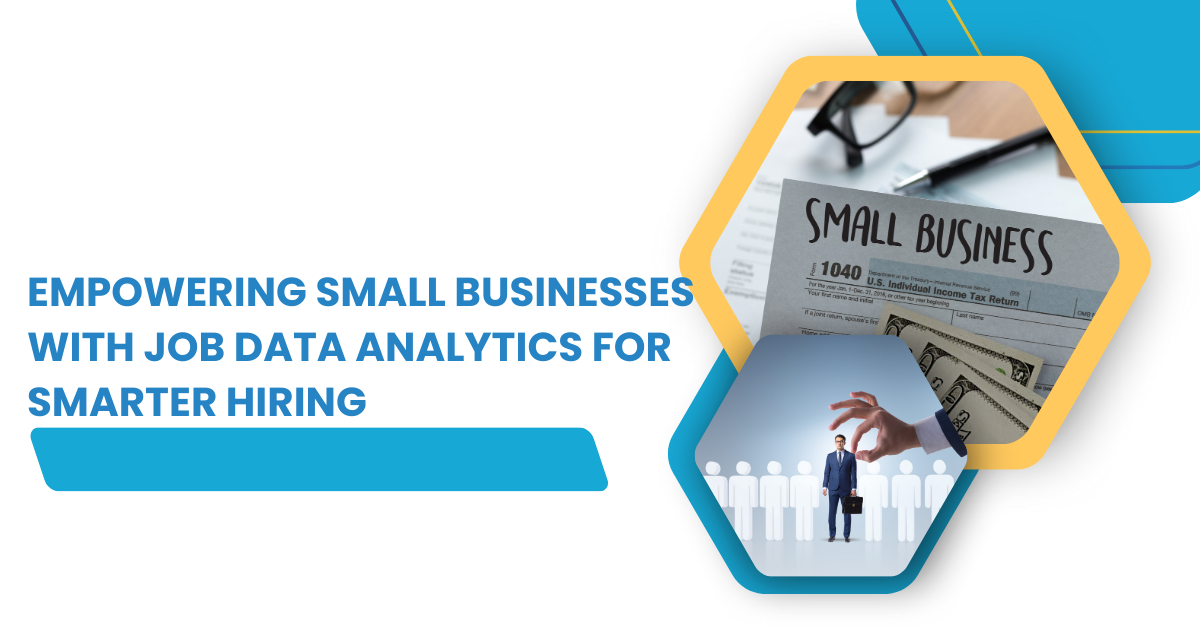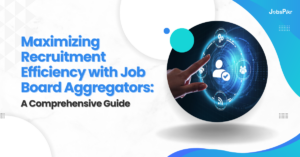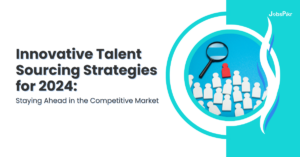In the quest for a competitive edge and sustainable growth, small businesses can no longer afford to overlook the insights yielded by job data analytics. This process involves systematically analyzing employment data to inform and enhance the hiring strategy. It unlocks a wealth of benefits; with precise analytics, small enterprises can:
- Identify the most effective channels for talent acquisition.
- Understand the characteristics of successful employees.
- Streamline the recruitment process to save time and resources.
- Forecast staffing needs to maintain optimal operation.
- Improve the overall quality of hires, increase productivity and reduce turnover.
By harnessing the power of job data analytics, small businesses can make smarter hiring decisions, contributing substantially to their long-term success.
Understanding Job Data Analytics and Its Role in Hiring
Job data analytics harnesses the power of big data to analyze employment trends, skill requirements, and candidate qualifications. By studying job postings, applications, and employee performance metrics, it provides actionable insights into:
- The most sought-after skills and qualifications in the job market
- Effective sources for candidate recruitment
- Predictive trends concerning job roles and industry changes
This data-driven approach helps small businesses make informed decisions, ensuring they attract and retain the right talent for their needs. It streamlines the hiring process by identifying the best candidates quickly, optimizing job descriptions, and forecasting future hiring needs, ultimately leading to a more strategic and efficient recruitment process.
The Benefits of Data-Driven Recruitment for Small Enterprises
- Enhanced Hiring Accuracy: Small businesses can increase the precision of their hiring process through data analytics, matching candidates with job requirements more effectively.
- Cost Efficiency: By streamlining recruitment, small enterprises reduce the expense and time associated with finding the right talent.
- Competitive Edge: Leveraging job data analytics allows small businesses to compete with larger corporations in attracting top talent.
- Reduced Turnover: Data-driven insights facilitate the selection of candidates more likely to thrive and remain in the position, thus decreasing turnover rates.
- Improved Diversity: With objective data, businesses can consciously work towards creating a more inclusive workplace by identifying and eliminating potential biases in the hiring process.
- Strategic Workforce Planning: Data analytics empowers small businesses to foresee hiring needs and skill gaps, laying the groundwork for proactive and strategic planning.
Key Job Data Metrics Small Businesses Should Monitor
Small businesses must track specific job data metrics to ensure informed hiring decisions:
- Time to Fill: Measures the time taken from job posting to accepting an offer, indicating efficiency.
- Cost per Hire: Calculates the total expense of recruitment per new employee, highlighting budget effectiveness.
- Applicant Sources: Track where job applicants are coming from to optimize recruitment channels.
- Quality of Hire: Assesses new hire performance and their contribution to the company over time.
- Turnover Rates: Highlights the frequency of employees leaving, signaling potential workplace or hiring issues.
- Offer Acceptance Rate: The ratio of accepted job offers to total offers made, showing the company’s appeal to candidates.
How to Implement Job Data Analytics in Small Business Hiring Practices
Image Source: Recruitcrm.io
- Identify Key Metrics: Determine the most vital attributes for the role, including skills, experience, and cultural fit.
- Choose Right Tools: Invest in job data analytics software tailored for small businesses, focusing on cost-effectiveness and ease of use.
- Collect Data: Track applicants’ information and hiring outcomes to analyze patterns and improve processes.
- Analyze Results: Use data to understand which sources bring the best candidates and why some applicants succeed over others.
- Making Informed Decisions: Base hiring choices on quantifiable data, reducing biases and improving the quality of hires.
- Refine and Repeat: Continuously refine hiring criteria and analytics methods to stay aligned with evolving business needs.
Overcoming the Challenges of Adopting Data Analytics in Recruitment
Integrating data analytics into recruitment processes can pose several hurdles for small businesses. These include:
- Cost of Analytics Tools: Investing in sophisticated analytics software can be a financial strain. Small businesses can seek out cost-effective or open-source alternatives that still offer crucial insights.
- Data Analysis Expertise: The lack of staff expertise can impede the adoption of data analytics. Small businesses can overcome this by providing training or hiring a specialist with experience in data-driven recruitment strategies.
- Cultural Resistance: Employees may resist changes to data-driven methods. Transparent communication about the benefits and support during the transition phase can facilitate acceptance.
- Data Privacy Issues: Ensuring compliance with data protection regulations is crucial. Small businesses can achieve this by developing clear data governance policies and staying informed about legal requirements.
By tackling these challenges head-on, small businesses can effectively harness the power of job data analytics, leading to smarter and more efficient hiring decisions.
Leveraging Job Data Analytics for Long-Term Business Growth
Employers who utilize job data analytics can gain valuable insights into hiring trends and patterns that can inform long-term business strategies. By analyzing past hiring data, businesses can:
- Identify the most efficient channels for sourcing talent, optimizing recruitment budgets.
- Forecast future hiring needs to create proactive talent acquisition plans.
- Determine the characteristics of high-performing employees to refine job descriptions and selection criteria.
- Recognize skills gaps within current teams, paving the way for targeted training programs.
- Measure the effectiveness of onboarding processes and make improvements to boost retention rates.
Through such data-driven techniques, small businesses can increase their competitive edge and foster sustainable growth.
Conclusion: The Future of Small Business Hiring with Job Data Analytics
The landscape of small business hiring is undergoing a profound transformation, prioritizing data-driven decision-making. Job data analytics heralds a future where small businesses can recruit with the precision of their larger counterparts, enabling them to:
- Identify skill gaps and emerging industry trends
- Refine job descriptions based on successful profiles
- Streamline the applicant screening process
- Enhance candidate experience by shortening hiring cycles
- Predict future hiring needs with greater accuracy
As such, for small enterprises aiming to thrive in a competitive market, embracing job data analytics is not just beneficial—it’s imperative for sustained growth and success.




